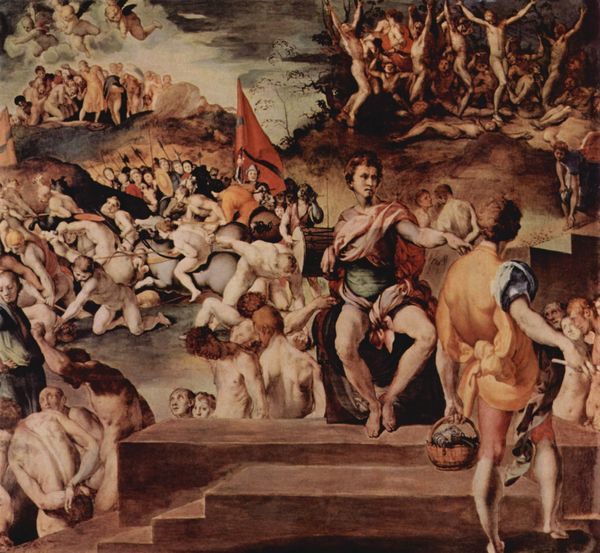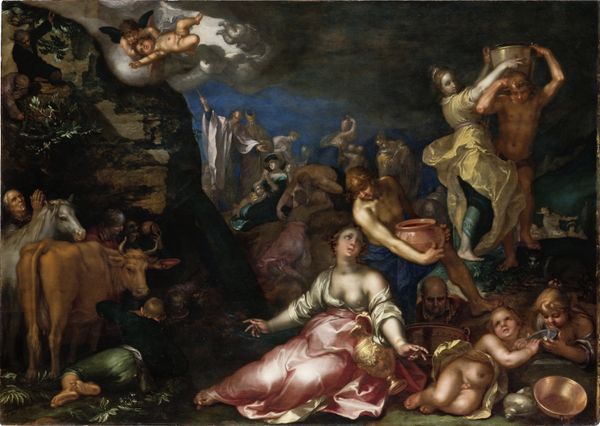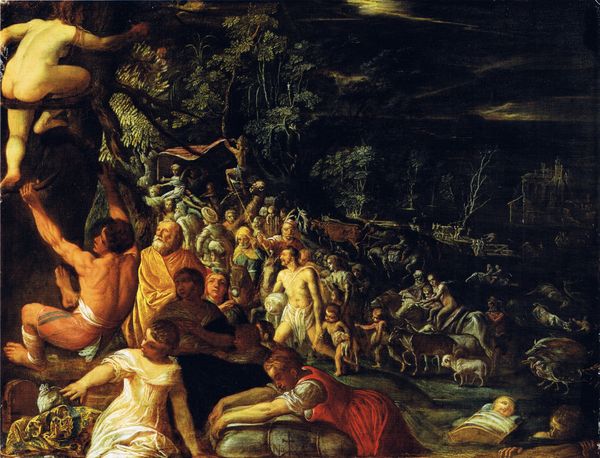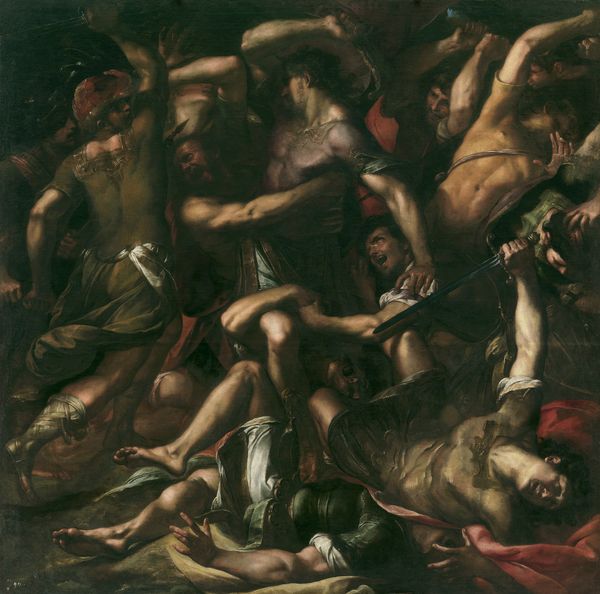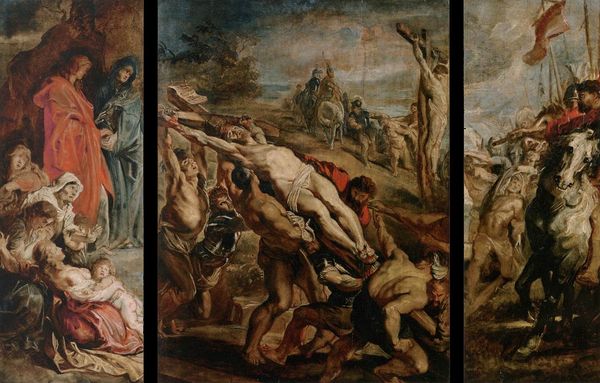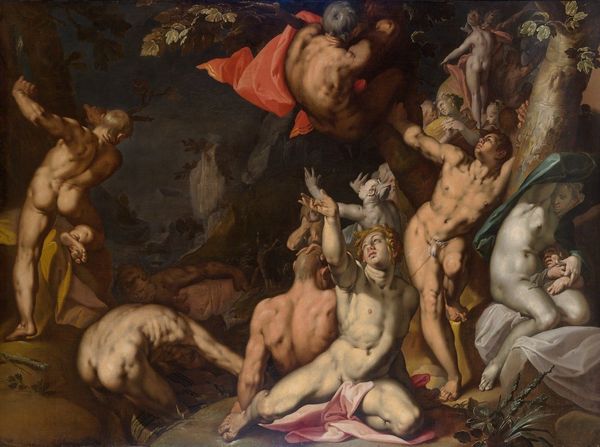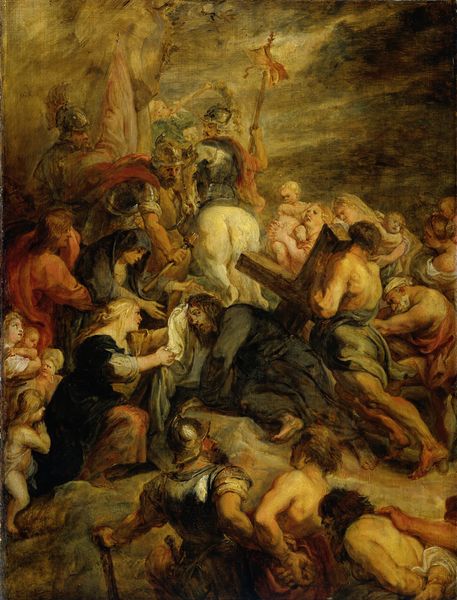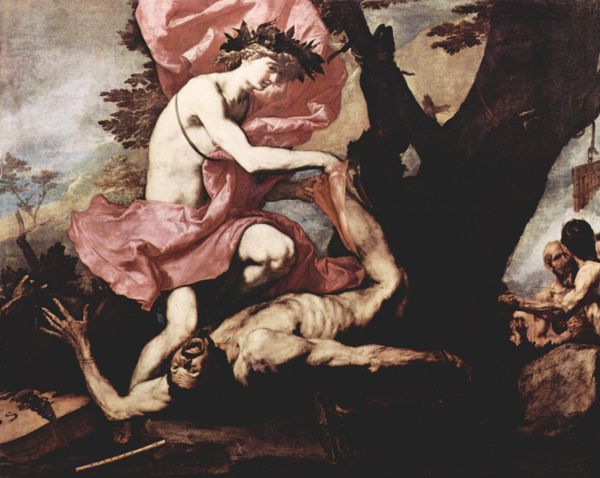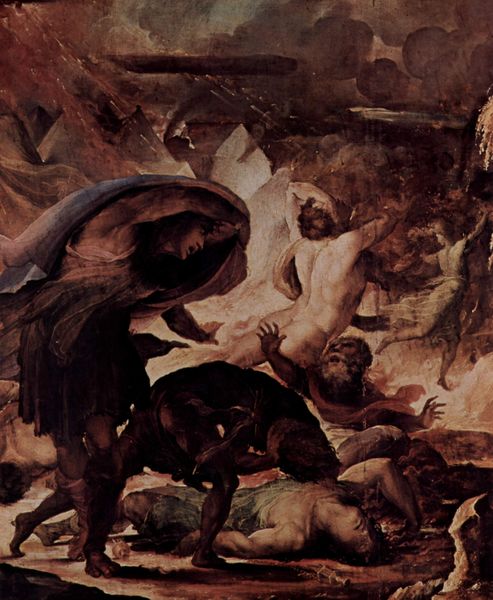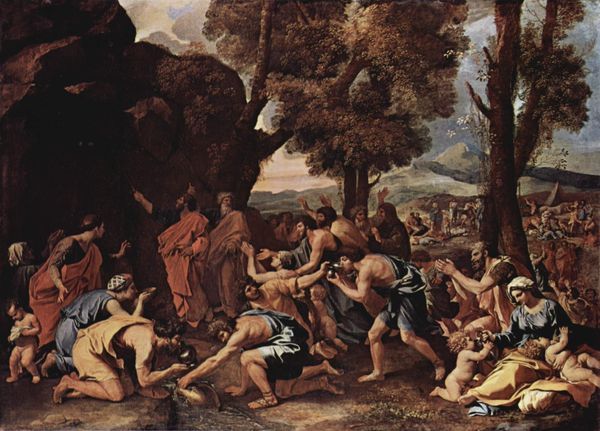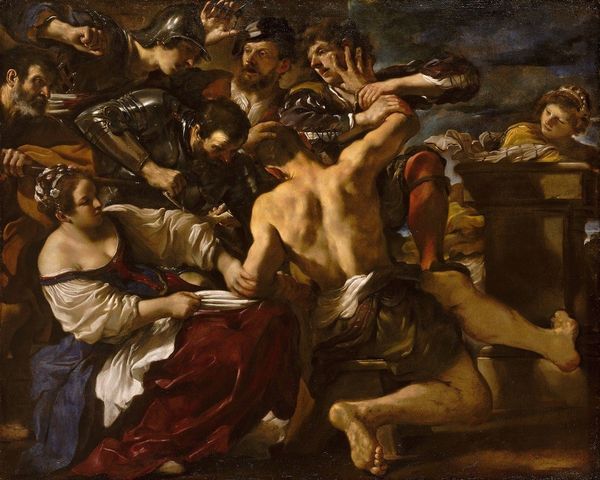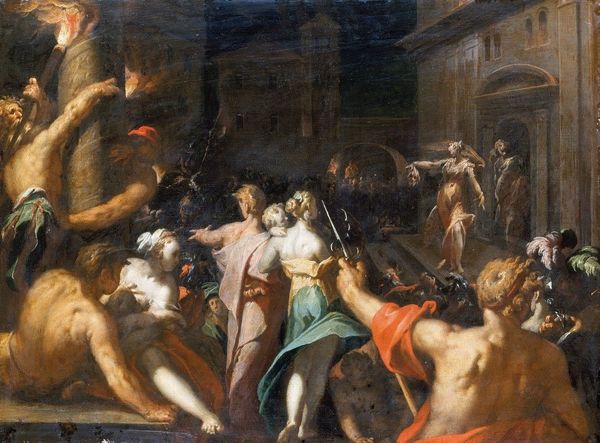
oil-paint
#
oil-paint
#
charcoal drawing
#
mannerism
#
figuration
#
oil painting
#
history-painting
#
italian-renaissance
Copyright: Public domain
Curator: Standing before us is Domenico Beccafumi’s compelling oil painting, "Die Strafe Des Hollenfeuers," or "The Punishment of Hellfire" from 1538. Editor: What strikes me first is this dizzying, swirling chaos. Bodies contort in agony, expressions scream with terror. It's like looking into the eye of a storm, but the storm is made of human suffering. Curator: Exactly! Beccafumi masterfully employs the Mannerist style, distorting and exaggerating the human form to amplify the emotional impact. Those elongated limbs and tormented faces convey a profound sense of spiritual and physical anguish. He really makes you feel it, doesn't he? Editor: Absolutely. There's also the symbolic weight of the setting. It’s not just fire; it's a whole landscape of torment. And the upturned gazes of some figures, looking desperately towards the heavens – that speaks to the human desire for redemption even in the face of unimaginable suffering. It makes one ponder on the ideas of damnation and hope intertwined. Curator: And the odd lighting. It adds a dramatic flair, like a twisted spotlight revealing snippets of agony while keeping most of the scene shrouded. Very theatric in a devilish sort of way! Do you think the characters themselves signify the levels of society being doomed at the time? Editor: That's insightful. Considering the socio-political upheavals of the Renaissance, Beccafumi might very well be portraying societal decay. The wealthy, the clergy, common folk... they're all here, engulfed in the same torment. It could be read as a critique of worldly corruption. This seems like it has deeper symbolism than meets the eye. Curator: What gets me every time is just how timelessly dreadful this artwork is. Like, yes, it depicts "Hell," but it mirrors the internal battles, the consequences of our actions and a world riddled with mistakes we, as humans, are prone to. Editor: Agreed. It forces us to confront the shadows within ourselves and society, sparking uncomfortable but necessary reflections on justice, morality, and the enduring human capacity for both good and evil. It reminds us about our own shortcomings, as Beccafumi tried to communicate. Curator: Well said! A truly evocative exploration that manages to make us squirm a little but reflect profoundly, isn't it? Editor: Absolutely. A painting that serves as a potent reminder about our moral compass as human beings.
Comments
No comments
Be the first to comment and join the conversation on the ultimate creative platform.
